Your SPORT HYBRID i-MMD vehicle uses both an electric motor and a gasoline engine as propulsion sources, with the electric motor receiving electricity from an internal High Voltage battery and/or internal generator. The High Voltage battery is charged from the generator driven by the engine or regenerative braking.
When driving, your vehicle is propelled exclusively by the electric motor, exclusively by the gasoline engine, or by a combination of the two. The system selects which propulsion source is most appropriate and automatically switches to it. Under certain circumstances, pressing the e button can manually enable EV (driven only on electricity) mode.
● Energy efficiency
As with a gasoline-powered vehicle, hybrid vehicle fuel efficiency and driving range is most impacted by your driving style. Aggressive
acceleration and high-speed driving can easily trigger the system to switch the propulsion source to the gasoline-powered engine.
In addition, heavy climate control system use negatively affects vehicle range and efficiency. Either of these use patterns will more quickly
reduce the High Voltage battery's state of charge.
● Battery types
There are two types of batteries used in this vehicle; a standard 12-volt battery that powers the airbags, the interior and exterior lights, and
other standard 12-volt systems; and a high voltage battery that is used to power the propulsion motor and recharge the 12-volt battery.
SPORT HYBRID i-MMD SYSTEM MAIN COMPONENTS

Gasoline Engine – Runs the generator and under certain conditions, drives the wheels directly.
Generator – Starts the engine and generates electric power when driven by the gasoline engine to supply electricity to power the electric motor and/or to charge the High Voltage battery.
Electric Motor – Provides propulsion to drive the wheels in conjunction with the gasoline engine in certain conditions and provides electricity to the High Voltage battery through regenerative braking.
High Voltage Battery – Provides electrical storage and serves
as a power source for the electric motor.
Learning about the High Voltage battery’s characteristics will
help you get the best handling and maximize the range of your
electric vehicle.
● Sounds Unique to the SPORT HYBRID i-MMD System
When you first start driving this vehicle, you will likely hear some unfamiliar sounds, particularly when you turn on the power system, or
while you are driving or accelerating from a stop. Some of these sounds are unique to this vehicle‘s powertrain, fuel, and climate control
systems; others are similar to sounds generated by conventional automobiles that typically are masked by louder noises absent from a
vehicle of this design. These sounds are not a cause for concern, and you will soon recognize them as normal and thus be able to detect any
new or unusual noise should one develop.
After shutting off the engine, you may hear certain noises coming from the vehicle. Here’s the lowdown:
● Noise from Under Vehicle: This noise is caused by the vacuum pump inside the fuel evaporation leakage check module (ELCM).
Depending on conditions, the pump will come on for about 15 minutes about 5 to 10 hours after engine shutoff. This noise is just normal
vehicle operation and doesn’t indicate a vehicle problem.

| Operating mode | Electric Vehicle (EV) | Hybrid (HV) | Engine (Direct Drive) |
Regeneration |
|---|---|---|---|---|
| Driving state | Stopped or driven at low speeds:
|
Driven in high-load conditions
(e.g., when accelerating, going
uphill):
|
Driven in high-speed, low-load
conditions:
|
The accelerator pedal is released
and the vehicle is decelerating.
|
| Power Flow Monitor |
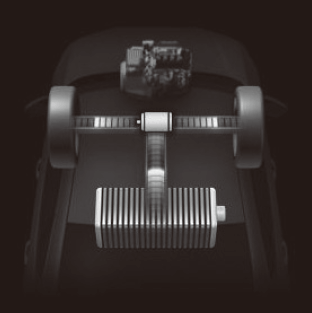 |
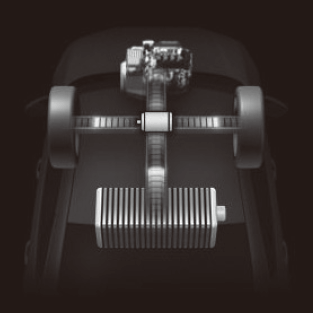 |
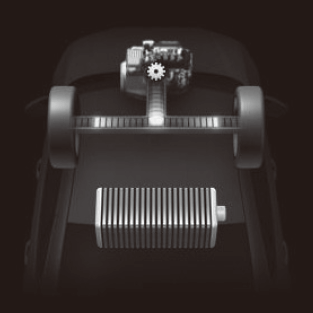 |
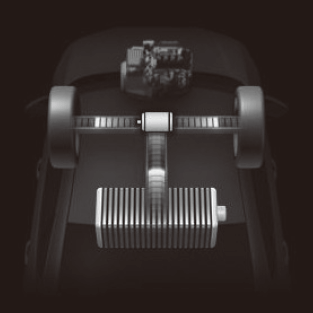 |
| Electric motor | Stopped/Running | Running | Generating/Running | Regenerating |
| Generator | Stopped | Generating | No Output | Stopped/No Output |
| Engine | Stopped | Running | Running | Stopped/No Output |
| High Voltage battery | Discharge | Charging/Discharge | Charging/Discharge | Charging |
e Button
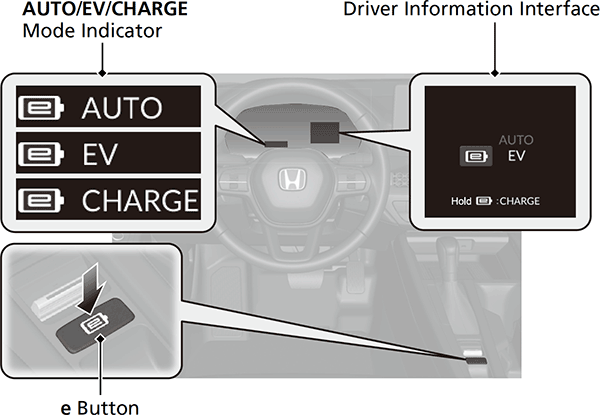
AUTO Mode
When driving, your vehicle is propelled exclusively by the electric
motor, exclusively by the gasoline engine, or by a combination of
the two. The system selects which propulsion source is most
appropriate and automatically switches to it.
EV Mode
When EV mode is activated, your vehicle is propelled exclusively by
the electric motor.
When you press the e button and select EV mode, EV mode is
enabled and the EV mode indicator comes on. When you press the
e button again and select AUTO mode, the AUTO mode indicator
comes on.
Shifts in vehicle, driving, or road conditions may automatically cancel EV mode and/or keep the system from manually switching into EV mode. When this happens, the beeper sounds and a message appears on the driver information interface.
CHARGE Mode
When CHARGE mode is activated, the engine starts and the High
Voltage battery begins charging.
When you press and hold the e button, CHARGE mode is enabled
and the CHARGE mode indicator comes on. When you press and
hold the e button again and select AUTO mode, the AUTO mode
indicator comes on. By pressing and holding the e button, you can
select a mode to change to, and the indicator for the selected mode
will come on.
Shifts in vehicle, driving, or road conditions may automatically cancel CHARGE mode and/or keep the system from manually switching into CHARGE mode. When this happens, the beeper sounds and a message appears on the driver information interface.
● Regenerative Energy and Regenerative Braking
-
When decelerating without the accelerator being depressed or the brake pedal being applied, or while driving downhill, the electric motor acts as a generator that recovers a portion of the electrical energy that was used to accelerate the vehicle. This regenerative braking slows the vehicle in a manner similar to engine braking in a gasoline-powered vehicle.
-
When regenerative braking is in operation
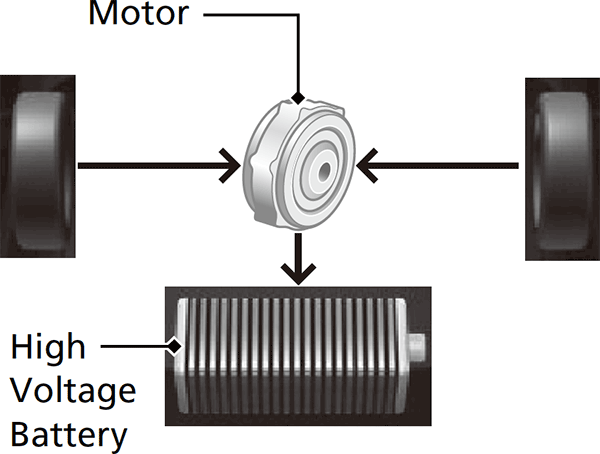
● Auto Engine Stop/Start
Your vehicle’s gasoline engine automatically stops running during vehicle operation or restarts while the vehicle is stationary when it is
appropriate.
In the following cases, however, auto engine stop may not activate.
- The vehicle momentarily needs additional power for aggressive acceleration, or driving uphill or at high speed.
- The climate control system is in heavy use.
- The High Voltage battery temperature is high or low.
- The High Voltage battery is too low on charge.
Safety Precautions
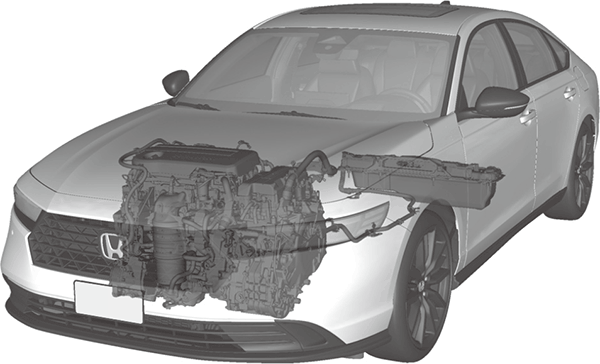
Do not touch the High Voltage system
Attempting to take a High Voltage system component apart or disconnect one of its wires
can cause severe electrical shock. Make sure that any maintenance or repairs to the High
Voltage system are performed by a Honda dealer.
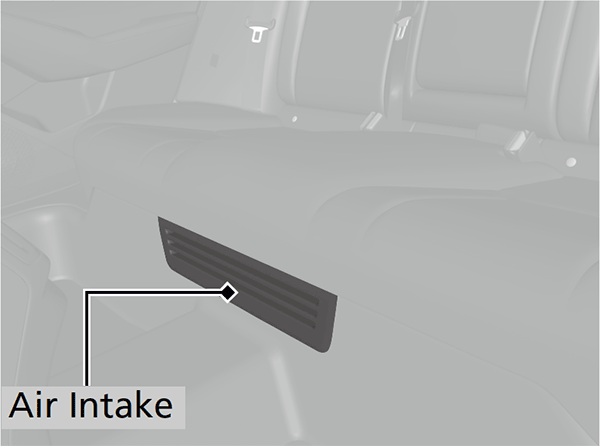
If the air intake is obstructed during vehicle operation, the High Voltage battery can become too hot. To protect the battery, the system may start to limit the battery’s output and cause the power system and 12-volt battery charging system indicators to come on.
If a crash occurs
● Be careful of electric shock hazard.
- If a severe crash damages your vehicle’s High Voltage system, there is a possibility of electrical shock due to exposed High Voltage components or wires. If this happens, do not touch any of the High Voltage system components or any of its orange wires.
- The High Voltage battery contains a flammable electrolyte that could leak as a result of a severe crash. Avoid skin or eye contact with the electrolyte as it is corrosive. If you accidentally come into contact with the electrolyte, rinse the exposed skin or flush your eyes with copious amounts of water for at least five minutes, and seek medical attention immediately.
- Attempting to extinguish an electrical fire with even a small quantity of water, from a garden hose for instance, can be dangerous.
Emergency Shutdown System for the High Voltage System
If the vehicle is involved in a crash, the emergency shutdown system will activate depending
on the severity of the impact. When the system activates, the High Voltage system
automatically shuts down, and the vehicle can no longer move under its own power. To
return the High Voltage system back to normal operation, consult a dealer.
Honda collects and recycles High Voltage batteries used in its vehicles – consult a dealer for more information.
